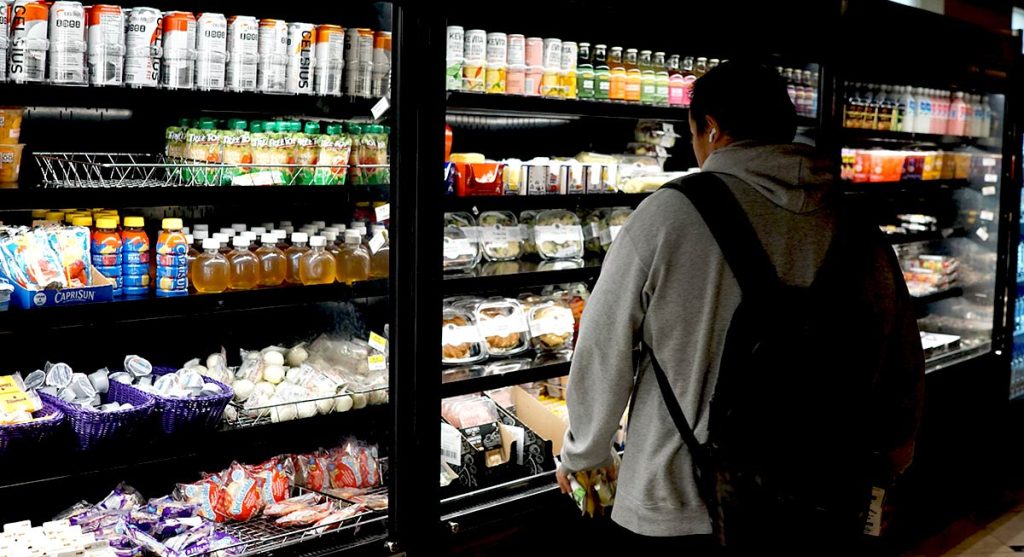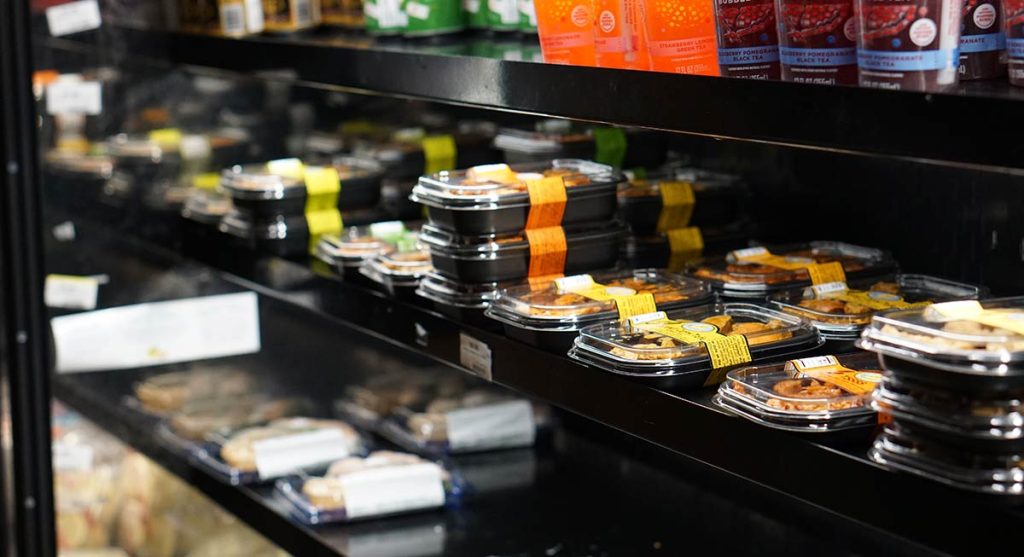Photovoice study captures UW student experience with food security
By Lori Tiede

How does food security show up in the daily life of a University of Washington (UW) student?
On May 28, an exhibit in the UW Husky Union Building (HUB) will share the findings of a unique photovoice project⸺a research method that combines photography with personal storytelling⸺which was led by student capstone teams from the Food Systems, Nutrition, and Health (FSNH) major in the UW School of Public Health.
The project kicked off in 2024 with student capstone teams pre-planning the project, then finished this year during winter and spring with other capstone teams conducting focus groups, studying the data, and preparing for the exhibit.
The project focuses on seven UW students who volunteered to self-document their typical day of navigating food choices on campus.
In February 2025, participants received a basic photography lesson and a small honorarium and were asked to participate in two focus groups where they shared their personal experiences with food security on campus.
Derek Jennings, an assistant professor in health systems and population health, and UW School of Public Health’s associate dean for Indigenous affairs and engagement, provided photography lessons to the participants. Jennings has experience with incorporating image-based research and photo voice methodologies from his own research.
Jennings’ advice to participants: Capture images that are honest and tell a story, not to aim for perfect food photos.
UW food security in photos
Nearly 100 photos were submitted by study participants.
In one photo, a student illustrates the small kitchen space she shares with other students in their dorm. In a focus group, the student explained the number of physical barriers to cooking one’s own meals in a dorm which included coordinating around other students, and the financial costs of investing in pots and pans, or renting a fridge. The tools to cook are not provided.
Meals cooked for yourself may be cheaper and there is more control over the nutritional quality, but this option is less accessible when there is the financial burden of investing in the tools to cook, the time burden, and required cooking skills.
Because of these factors, students in the study say they often choose pre-made foods despite being more expensive and sometimes less nutritious.

In another photo, a student shares free food they acquired at a school-sponsored event consisting of a pineapple dessert and pizza. They shared that they often attend school events that advertise free food, independent of the event, just for the free food. The students also highlighted how most events offer only pizza, which is not the most nutritious option, but will still be consumed because it’s free.
Another student shared that sometimes they grab a donut when running off to class for its convenience, affordability and good taste. However, they regretted the choice later in the day, when experiencing stomach aches from eating only the donut.

The stories behind the photos, told to the capstone students during focus groups, repeatedly emphasized there was a lack of time to eat (let alone cook). Starting at breakfast when they had early classes, then at lunch time they could not eat due to classes being scheduled back to back without breaks, and then dinner when they had a late-night lab. This time barrier was repeatedly reported to influence students’ food choices, relationship with food, and ability to eat enough at all and certainly, enough healthy options.

Not having time to eat between classes and going without food most of the day led some students to eat what was convenient late at night, which often was ultra processed foods. Students recognized that the consequence of skipping meals during the day influenced why they would opt for the less nutritious food option at the end of the day, as they were both tired and extra hungry. But, they expressed not having the resources necessary to change this.
About the photovoice project
Students involved in leading the study wanted to look deeper at food security on the UW campus, specifically to gain a better understanding of what food security means on a personal level for a UW student.
“The idea of the photovoice study was to shift the lens—literally and figuratively—toward students themselves,” said Yona Sipos, the capstone course instructor and one of a small group of faculty members providing guidance to the student researchers.
“We wanted to give undergraduate students a platform to investigate the experiences of college food security, which is documented as a significant concern at UW and across the country. This project gives student research teams the opportunity to learn about and represent their own student community in documenting and telling their own stories, identifying barriers, and contributing to solutions. ”
Capstone student research teams facilitated the activities of the study which included planning and conducting multiple focus groups with participants to hear and understand the significance of the photos.
The photos and student stories gathered revealed that many UW students who identify as ‘food insecure’ are not always talking about being hungry.
“Previously published quantitative data shed light on the increasing prevalence of food security among college students. This qualitative study explored the ‘why’ behind these numbers, exposing the many barriers that UW students face when trying to access nutritious foods,” said Fernanda Nunes, an MPH-Nutrition student in who provided key support to the student teams during both quarters.
The top three themes identified for UW students were:
- Financial costs: Students repeatedly discussed the financial cost of groceries, pre-made meals and snacks as a significant barrier to their ability to access nourishing foods.
- Time limitations: Students reported having limited time both to prepare food and to sit down and eat a meal without rushing to and from school-related responsibilities, such as classes and homework.
- Physical access: Students elaborated on various physical barriers, including limited kitchen space, limited access to pots and pans to prepare food, and difficult access to affordable groceries on or near campus.
Other barriers can include lack of basic cooking skills and experience.
When college students experience food security, it is more challenging to keep up with classes and responsibilities.
“Through the Food Systems Capstone (NUTR 493), I’ve partnered hundreds of our students with an ever-evolving group of community and academic leaders to investigate complex problems playing out locally. The theme of college food security is one that deeply resonates with our students and also gives us opportunities to partner with the UW Food Pantry, UW Farm, WASH-PIRG, and others invested in finding solutions,” said Sipos.
The photovoice project highlights food security as a systemic issue, not a personal failing.
The photovoice project exhibit will be open to the UW community on Wednesday, May 28 from 10:00 a.m. to 12:00 p.m. on the first floor of the HUB. For students involved in the project, the exhibit aims to spark a much-needed conversation about how the university can improve and better support the basic needs of UW students.
The UW Photovoice study was led by student teams in the Food Systems, Nutrition, and Health (FSNH) program with guidance from faculty members: Yona Sipos, associate teaching professor in Environmental and Occupational Health Sciences (DEOHS) and undergraduate experiential learning director for FSNH; Michelle Averill, teaching professor in DEOHS and director for FSNH; Derek Jennings, assistant professor in Health Systems and Population Health and UW School of Public Health’s associate dean for Indigenous affairs and engagement; and Fernanda Nunes, research assistant and MPH-Nutrition student in the FSNH program.
May 20, 2025